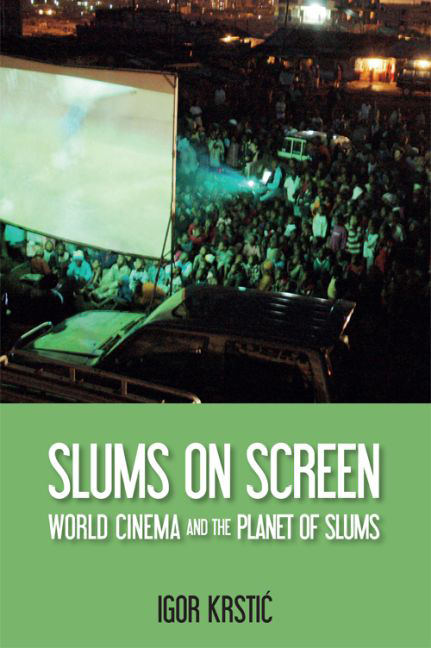Book contents
- Frontmatter
- Contents
- List of Figures
- Acknowledgements
- Introduction
- 1 Slums on and off Screen
- Part One Global Currents
- 2 Sensational Remediations
- 3 Documentary Mappings
- 4 Neorealist Narratives
- 5 Third Docufictions
- 6 Postmodern Bricolages
- 7 Digital Realisms
- Part Two Local Expressions
- Conclusion
- Bibliography
- Index
7 - Digital Realisms
from Part One - Global Currents
- Frontmatter
- Contents
- List of Figures
- Acknowledgements
- Introduction
- 1 Slums on and off Screen
- Part One Global Currents
- 2 Sensational Remediations
- 3 Documentary Mappings
- 4 Neorealist Narratives
- 5 Third Docufictions
- 6 Postmodern Bricolages
- 7 Digital Realisms
- Part Two Local Expressions
- Conclusion
- Bibliography
- Index
Summary
To address realism in world cinema today … means engaging with what has been termed the ‘ontological turn’, the ‘return of the real’, the presence and agency of ‘things’.
Thomas ElsaesserThree films about Fontainhas … a neighbourhood that does not exist any more, since it has been bulldozed by the local authorities. The first film opens with a medium close-up of a teenage girl. Her name is Tina. She sits in a shadowy corner of a room, probably her own room, on the edge of an old bed. There is a pillow, a blanket and the shabby wall in the background; nothing else is in the frame. Tina looks fragile, defenceless, exhausted. For forty-five seconds we look at this bleak image of her sitting there. She looks back at us, straight into the camera. Then she looks down, hiding feelings of shame perhaps. Finally she leans her head against the wall, too tired, it seems, to sustain our gaze or that of the camera any longer. The opening shot of the second film is equally static and once again we are offered a glimpse into the private world of a bleak bedroom. This time we see two slightly older women sitting on a bed. It is Vanda and her alarmingly emaciated sister Zita. Both of them are drug addicts. They are chatting, coughing and smoking heroin. It looks like a daily routine, almost lifeless. These are, it seems, two more exhausted women in another shabby apartment that is sparsely lit and meagrely furnished. But the quality of the image is now crisper, sharper, more colourful, since it has been shot on digital video. The third opening image is also shot with a digital video camera, but it has a different motif. Now we remain outside and look instead at the facades of tremendously rundown buildings. We see them at night-time as they radiate a sense of mystery or even horror. Because it is digital, the image looks like a gothic painting; in fact, it is hauntingly beautiful, even though it frames badly deteriorated apartments. The horror that these buildings possibly contain is emphasised by the sound that shatters the tranquillity: that of furniture being tossed out of a window.
- Type
- Chapter
- Information
- Slums on ScreenWorld Cinema and the Planet of Slums, pp. 164 - 192Publisher: Edinburgh University PressPrint publication year: 2016



